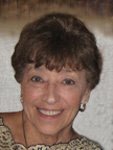When you consider writing a book, your first thought is about the subject matter. In fact, most new authors don’t think much beyond the main content. But the chapters in your book are only one of the parts you must write; and though they are the most important and the most time consuming, they cannot stand alone.
The front cover has the title, your name, an illustration, and perhaps an endorsement or quote from a favorable review. The back cover is your full-page ad. It should include a description of the main features of the book, a category, a brief bio and a photo of the author, the publisher, an ISBN number, a bar code, and the price.
Front Matter
Copyright page. This page is usually provided by the publisher. It contains certain basic information, such as the title, the author’s name, the copyright date, a paragraph explaining copyright rules, the country in which it is printed, the ISBN number, a Library of Congress number, the publisher, its location, and contact information.
Preface. This is written by the author and explains why and how you wrote the book. It can tell your story in a very personal way, if you wish.
Foreword. This should be written by someone other than the author and is particularly powerful when an expert in the field writes it. If the writer is a person with a recognized name or title, you might want to mention “Foreword by name” on the cover.
Introduction. Think of the introduction as a practical guide to using the book. It should explain what the book is about, why it was written, and how it should be read, if there is more than one way. If you are expressing a point of view that will enhance the reader’s understanding, include it in the introduction. This is your chance to explain your rationale.
Acknowledgments. Few of us write our books without help, no matter how well versed we are on the subject matter. There are hundreds of ways in which assistance is given, from people willing to share their expertise and knowledge to editors who turn our rough prose into pearls. Here is the place to thank everyone who contributed to the book in any way.
The Chapters
Of course, the bulk of the writing takes place between the front and back matter. Your main headings become your table of contents; each key point becomes a subhead of your chapter. Under the subheads, is the meat—your research, narrative, quotes from interviewees, resource materials, and graphics. The important thing is to get all the pertinent information under each subhead.
Back Matter
Bibliography. If you have read other books and quoted other authors, a bibliography acknowledges the sources. Of course, you should attribute quotes in the copy or with footnotes. A bibliography also gives readers a list of references to read if they wish to dig more deeply into the subject.
Appendices. Sometimes, you have so much background information or detail that, if you included all of it in the main body of work, you might overwhelm your reader. Appendices are a good place to put scientific data, charts, reports, and detailed explanations without ruining the flow of your text.
Glossary. This is an optional, alphabetically arranged dictionary of terms peculiar to the subject of the book. Try to define such words in the text.
Epilogue. If you have “one last thought,” this is the place to express it.
Index. When a book is filled with facts or topics a reader might want to find quickly, an index is the fastest way to find them. There are two types of indexes—subject matter and detailed. I strongly suggest you hire a professional indexer instead of using the index feature of your word-processing program.






